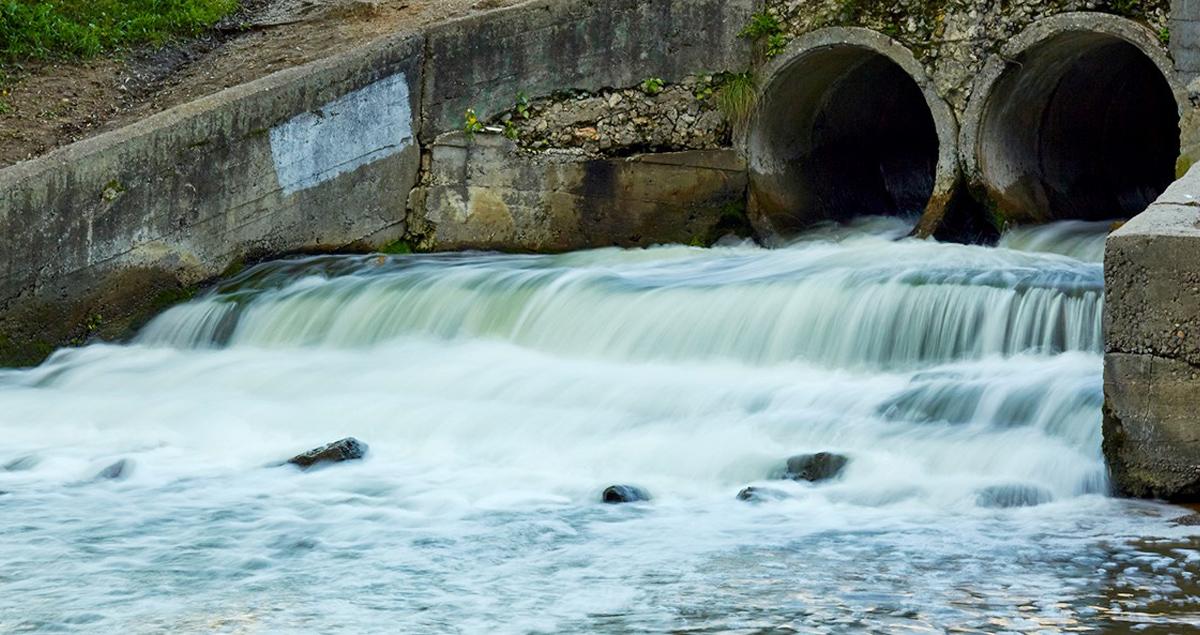Has your drinking water been digitized? Connected technology has hit water management

Hidden beneath the asphalt, miles of tubes snake through our cities. You can’t see it, but this infrastructure plays a huge role in how municipalities handle everything from wastewater to the H2O that streams from your tap. Despite its importance, much of the United States’ water infrastructure is outdated. Consider this: More than 750 cities in the United States still rely on combined sewers, a water management system that uses the same pipes to handle storm water, sewage, and industrial wastewater. During times of high flow (rain storms, for instance), water can exceed the tubes’ capacity and discharge into rivers, streams, or the ocean, creating some serious implications for water quality and human health.
But infrastructure is getting better, if slowly. Cities across the country have begun investing in technology that will help them better manage their water resources. Sensors, data analytics, and internet of things software are turning dumb infrastructure smart and improving water sanitation and conservation along the way.
Companies like EmNet are helping to push this new era of infrastructure forward. The Midwestern startup was founded in 2004 with the idea of helping cities manage their wastewater through optimizing the water infrastructure it already has. EmNet’s goal is to automate the decision-making process around wastewater management by installing sensors and gathering data that can help a city determine where to direct water through their underground system in order to prevent overflows. In South Bend, Indiana, for example, EmNet has installed more than 150 sensors that gather information about water flow and rainfall. This data, combined with predictive weather data, is crunched and analyzed in order to provide real-time decisions about water flow.
Since implementing the system, South Bend has reduced wastewater overflow by a billion gallons per year. All told, the city is cutting nearly $400 million out of a $600 million proposed infrastructure overhaul by using EmNet’s solution. Instead of building the proposed sewage tanks and a new water pipe, the city can take better advantage of the infrastructure that’s already there. “Not only are they avoiding future infrastructure costs, but they’ve already achieved 70% of their objective with a nominal amount of money respective to what they would’ve spent,” says Tim Braun, EmNet’s enterprise architect.
EmNet isn’t the only company thinking about this problem. Fujitsu Laboratories is developing similar technology that would allow the company to optimize the location and number of sensors needed in a sewage system. By analyzing the topography of the land, rainfall patterns, and layout of the underground pipes, Fujitsu is able to track the water network’s flow with far fewer sensors. Meanwhile, local governments are getting involved. The New York Department of Environmental Conservation recently asked for applications for its Sewage Pollution Right to Know Grant, which will award communities with $50,000 to install technologies that detect sewage water overflow.
Of course, too much wastewater isn’t a city’s only aqua-related concern pollution, increased energy consumption, and water shortages are on the rise thanks to a boom in population. On the industrial side, companies like Mitsubishi Heavy Industries are combatting these issues with technologies like its electrochlorination system. By running an electric current through seawater, the system is able to produce sodium hypochlorite, a compound known for its disinfecting properties. Mitsubishi Heavy Industries has installed more than 165 electrochlorination systems around the world at desalination plants, power plants, and offshore platforms (to name just a few applications). Their main purpose is to prevent accumulation of marine growth like shellfish and seaweed in equipment, which can lead to less efficient machine production and ultimately to less environment-friendly forms of cleaning. On the city level, a host of companies including IBM are trying to address the estimated 6 billion gallons of water that leak out of old pipes every day through technologies that can sense leaky pipes. That data is used to control water pumps and inform cities on where repairs need to happen.
Though cities are investing in their underground water networks, there are still plenty of issues plaguing some of our most important infrastructure. Connected technology is helping to resolve some those problems, but its greatest contribution is less tangible than reducing repair costs and saving billions of gallons of water every year: Technology is showing us that when it comes to hidden infrastructure, sometimes the most important improvement is being able to identify the problem in the first place.





